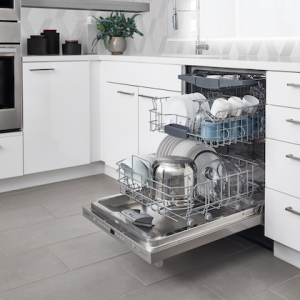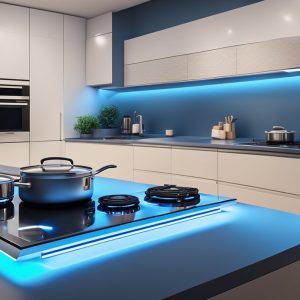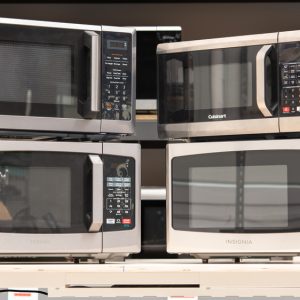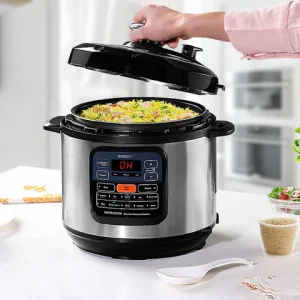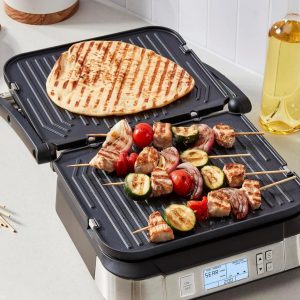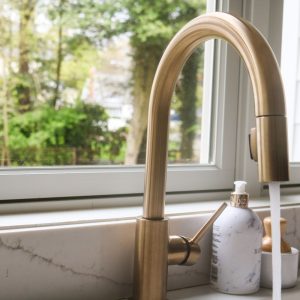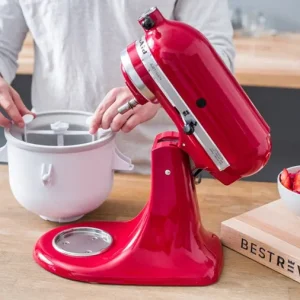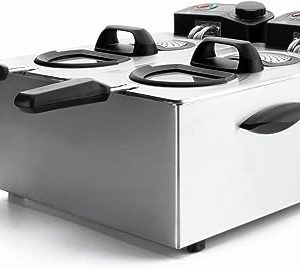Best hood and filter are essential in modern kitchens, maintaining air quality and ensuring a pleasant cooking environment. An effective kitchen hood not only helps eliminate smoke, odors, and airborne grease but also contributes to the overall aesthetic of the kitchen space. Filters, on the other hand, act as vital barriers that trap impurities, ensuring that clean air is recirculated back into the kitchen or vented outside. Choosing the best hood and filter can significantly enhance your cooking experience, create a healthier home environment, and reduce the risk of damage to your kitchen appliances from accumulated grease and grime. Here are our advances.
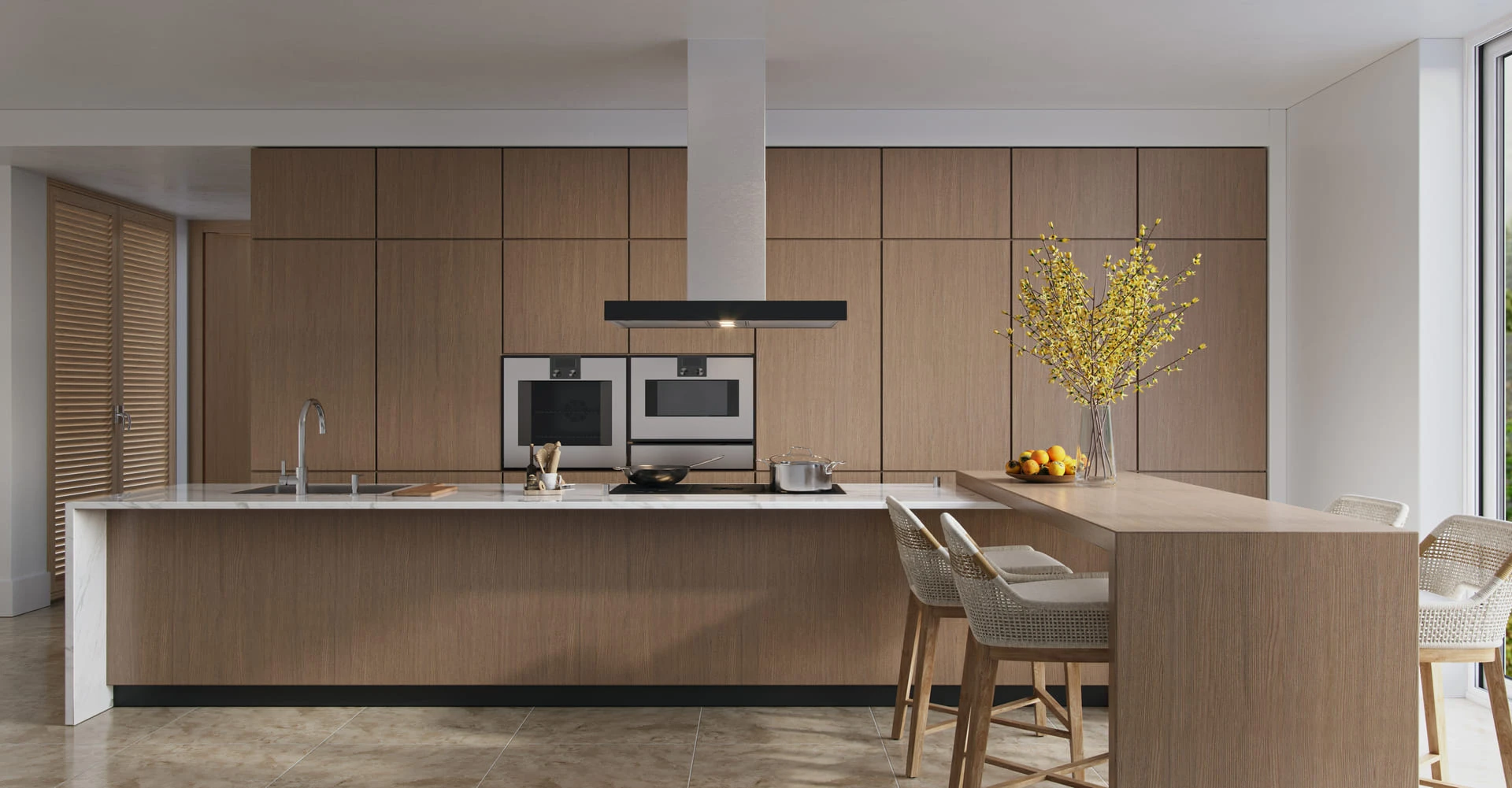
How To Choose The Different Types Of Best Hoods And Filter
When it comes to selecting a kitchen hood, understanding the various types available is critical to making an informed choice. Each type comes with its unique set of features and benefits, catering to different cooking styles and kitchen designs. This article will explore various aspects of hoods and filters, including their types, features, maintenance, and how to choose the right one for different kitchen setups. We’ll dive deeper into the distinctions between different hoods and filters, weighing the pros and cons of each type and providing insights into optimal performance for your specific needs.
Wall-Mounted Range Hoods
Wall-mounted range hoods are perhaps the most popular choice among homeowners due to their adaptability and design appeal.
These hoods are installed directly onto the wall above the cooking surface, providing ample ventilation while creating a focal point in the kitchen. They come in various designs, from sleek stainless steel to charming vintage aesthetics.
One notable advantage of wall-mounted hoods is their efficiency in removing smoke and odors, particularly if you enjoy cooking with high heat or frying foods. These hoods often feature higher CFM (cubic feet per minute) ratings, which means they can expel more air quickly, preventing the build-up of unwanted smells and particles.
However, homeowners should consider the installation process, as these hoods may require professional assistance depending on the existing ductwork and electrical setup. Additionally, regular maintenance and cleaning are essential to ensure optimal performance.
Under-Cabinet Range Hoods
Under-cabinet hoods are another popular option that offers versatility, especially in smaller kitchens where space is a premium.
As the name suggests, these hoods are mounted beneath the kitchen cabinetry, blending seamlessly with the overall design of the space. They are typically compact, allowing for easy installation without requiring significant modifications to the kitchen layout.
While under-cabinet hoods may not possess the same level of airflow as wall-mounted options, many models feature powerful fans and multiple speed settings to adapt to your cooking needs. Moreover, they often come with integrated lighting, enhancing visibility over the cooking area.
On the downside, it’s important to ensure these hoods are adequately sized for your cooktop to avoid inadequate ventilation, leading to lingering odors and excess moisture accumulation in your kitchen.
Island Range Hoods
Island range hoods are specifically designed for kitchens with cooktops located on islands.
These hoods are suspended from the ceiling, creating a striking visual element while providing effective ventilation. Island hoods come in various styles and sizes, allowing for customization to suit your kitchen’s design aesthetic.
One of the significant advantages of island range hoods is their ability to efficiently capture smoke and steam from all sides, given their central positioning. This makes them ideal for open-concept kitchen layouts where the cooking area is visible from the living or dining space.
However, installation can be more complicated, often requiring additional support structures and precise alignment with the cooktop. Additionally, since these hoods are exposed, they may require more frequent cleaning to maintain their appearance.
Downdraft Range Hoods
Downdraft range hoods provide a unique solution for homeowners seeking a minimalist design without sacrificing functionality.
These hoods are integrated directly into the cooktop or countertop and rise when needed, creating a streamlined look that maintains sightlines in the kitchen. They effectively pull smoke and odors downwards, venting them through ducts installed within the cabinetry.
While downdraft hoods offer an innovative design, they generally have lower CFM ratings compared to traditional hoods, making them less effective in high-heat cooking situations. Homeowners may also need to consider the additional costs associated with the installation and potential alterations to the countertops.
Our Collections
COMFEE

This 30-inch range hood boasts a powerful 450 CFM, ensuring that cooking odors are efficiently removed from my kitchen. The gesture-sensing and touch control panel are not only sleek but also incredibly convenient, allowing me to adjust settings with ease. The stainless steel design adds a touch of elegance to my kitchen, and the option to use it as ductless or ducted is a great feature. The baffle filters are effective at trapping grease and are easy to clean. The 2 LED lights provide ample illumination over the cooking area.
Advantages
- Installation was pretty easy
- The LED lights have the right amount of brightness
- Powerful, great-looking hood.
Inconvenience
It only had one bracket holding it up so I didn’t trust the drywall anchors, go to Home Depot and buy the toggle anchors that slide through half inch hole and you slide it tight.
IKTCH 30

The hood is great, it’s quiet, has four speeds, and has two lights mounted in the front. One of the best parts is the three filters, they are easy to remove and clean, and they look just like the ones you see in a restaurant. If you are thinking of purchasing a hood for your kitchen look no further, this is it. It’s one of the best hoods and filters to choose.
Advantages
- Elevating touch control with gesture-sensing and remote
- Equipped with 2pcs 3W energy-saving LED lights
- Low Noise Operation
Inconvenience
The problem started at install when we noticed one of the chimney pieces had a slight dent in it.
COSMO

The light underneath is super bright, the fan works amazingly, and the glass is thick. You can barely hear this when you turn it on and it is so easy to use with just one touch and it’s on. This range hood is great for that price point! The suction is good and I converted it to ductless to make it easier on the overall installation. It also looks great and can be set to the minimum fan speed which is very quiet. Definitely, recommend it.
Advantages
- very quiet fan speed
- performs and looks fantastic
- Light is awesome. So easy to clean
Inconvenience
We needed to install a hood for the addition of a gas range. The instructions aren’t great, but that’s where YouTube is helpful.
IKTCH 30

The hood is great, it’s quiet, has four speeds and two lights mounted in the front. One of the best parts are the three filters, they are easy to remove and clean, they look just like the ones you see in a restaurant. If you are thinking of purchasing a hood for your kitchen look no further, this is it!
Advantages
- The fan motor is louder
- easily post-install
- has a nice light
Inconvenience
One thing concerns about touch/sensor panel longevity. So far unfounded. But future parts availability does concern me in that respect.
Empava

Revolutionize your cooking with touch controls accessible from both sides of the range hood, designed for optimal convenience in shared spaces. This feature not only simplifies adjustments of fan speeds and lighting but also boasts a sleek surface that’s a breeze to clean, providing a clear advantage over traditional mechanical controls. Bref, this is a good choice for you.
Advantages
- Dual-Side Touch Control
- Ducted/Ductless Convertible
- Dishwasher-Safe Filters
Inconvenience
The price cost and just one thing like this.
Exploring Filter Options
Filters play a pivotal role in ensuring the efficacy of kitchen hoods by trapping grease, smoke, and other contaminants before they can enter the air. There are several filter types available, each offering distinct advantages and disadvantages.
Baffle Filters
Baffle filters are made using stainless steel and feature a series of angled panels that trap grease and smoke.
One of the most significant advantages of baffle filters is their durability and ease of cleaning. They can withstand high temperatures and are dishwasher-safe, making maintenance a breeze.
Moreover, baffle filters promote superior airflow, making them an excellent choice for heavy-duty cooking applications. They can handle larger volumes of air without compromising performance, allowing for efficient ventilation even during intense cooking sessions.
However, baffle filters may carry a higher price tag than some alternatives, and their effectiveness will depend on proper installation and regular cleaning routines.
Mesh Filters
Mesh filters are typically made of aluminum or steel mesh and are designed to trap particulates effectively.
These filters are lightweight, cost-effective, and efficient at capturing grease and smoke. Mesh filters are also easy to install and replace, making them a popular option for many homeowners.
However, mesh filters tend to require more frequent cleaning, as they can become clogged over time if not maintained properly. It’s essential to check the manufacturer’s recommendations regarding cleaning frequency to ensure optimal performance.
Charcoal Filters
Charcoal filters are specially designed for recirculating hoods, where air is purified and returned to the kitchen rather than vented outside.
These filters utilize activated carbon to absorb odors and impurities, making them ideal for apartments or homes without direct access to exterior venting. Although they do an excellent job of eliminating odors, charcoal filters do not remove grease as effectively as metal filters.
It’s worth noting that charcoal filters need to be replaced periodically, adding to long-term maintenance costs. Still, for those unable to install ducted systems, they serve as a practical solution for maintaining a fresher indoor environment.
Hybrid Filters
Hybrid filters combine the features of grease and charcoal filters, thus offering a multifaceted approach to kitchen ventilation.
These filters are designed to capture both grease and odors, making them a versatile option for various cooking styles. Hybrid filters are particularly beneficial for households that frequently prepare strong-smelling foods, ensuring a balanced and refreshing atmosphere in the kitchen.
While hybrid filters can prove to be slightly more expensive than traditional options, their dual functionality may justify the investment for many homeowners seeking comprehensive solutions.
Maintenance and Care
Regular maintenance and care are crucial for ensuring that your hood and filter perform optimally and extend their lifespan.
Investing in proper upkeep not only enhances efficiency but also contributes to a safer kitchen environment.
Cleaning Your Hood
Cleaning your kitchen hood should be a part of your regular kitchen maintenance routine.
Depending on your cooking habits, it is advisable to clean the hood’s exterior at least once a month. Use warm, soapy water or specialized kitchen cleaners to wipe down the surface and remove any built-up grease or grime. For stubborn stains, consider using a soft-bristled brush.
Additionally, inspect the underside of the hood regularly and ensure the grease filters are clean; ideally, they should be washed every 1-3 months or more frequently if you cook often. Check the manufacturer’s instructions for guidelines on how to properly clean your specific model.
Caring for Filters
Taking care of filters is equally important for maintaining efficient airflow and preventing unpleasant odors.
If you have baffle filters, you might only need to clean them every few months, as they withstand heavy usage well. You can place them in a dishwasher for hassle-free cleaning. However, always refer to the manufacturer’s recommendations for care specifics.
For mesh and charcoal filters, regular inspections are essential. If you notice a build-up of grease or the filters appear discolored, it’s time for a thorough clean or replacement. Charcoal filters should be replaced according to the suggested timeline provided by the manufacturer, typically every three to six months.
Professional Inspections
Depending on the age and type of your ventilation system, consider investing in professional inspections every few years.
A trained technician can identify potential issues, such as duct obstructions or fan malfunctions, ensuring your kitchen hood operates effectively. Regular professional assessments can help spot problems before they escalate, saving you money and enhancing safety.
FAQs
What is the types of the best hood and filter for home use?
The best type of kitchen hood depends on your cooking habits and kitchen layout. Wall-mounted hoods are popular for their efficiency and stylish designs, while under-cabinet hoods are great for compact spaces. For open-concept kitchens, island hoods are ideal.
How often should I clean my kitchen hood and filters?
It is recommended to clean your kitchen hood at least once a month and thoroughly wash the grease filters every 1-3 months. The frequency may vary based on your cooking habits; heavier usage requires more regular cleaning.
Do I need a ducted or ductless hood?
Choosing between ducted and ductless hoods depends on your kitchen layout. Ducted hoods vent air outside, providing superior odor and smoke removal, while ductless hoods recycle air using charcoal filters, making them suitable for apartments or kitchens without external venting.
Can I replace my filter myself?
Yes, most filters can be easily replaced by homeowners. Always refer to the manufacturer’s guidelines for specific instructions on how to remove and install new filters.
What maintenance is required for kitchen hoods?
Maintenance includes regular cleaning of the exterior, checking and washing filters, and scheduling professional inspections as needed. Proper care ensures efficient operation and extends the life of your kitchen hood.
Conclusion
Choosing the best hood and filter involves evaluating your cooking style, kitchen layout, and personal preferences. Understanding the different types of hoods and filters available empowers homeowners to make informed decisions tailored to their needs.
Whether you opt for a wall-mounted design for its classic appeal, an under-cabinet hood for limited spaces, or an island model to elevate your kitchen aesthetics, the right choice will enhance air quality and contribute to overall comfort.
Likewise, selecting the appropriate filters will ensure that the air remains clean, fresh, and free from odors. Investing in regular maintenance and care adds to the longevity and efficiency of your ventilation system. Ultimately, a well-chosen kitchen hood and filter can greatly improve your cooking experience and create a pleasant environment for family and friends alike.


